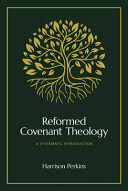I grew up in Corpus Christi, Texas, where my parents attended a Methodist church. As a child, I served as an acolyte and sang in the children’s choir—my first introduction to the church. I have fond memories of that time, but when my father argued with the organist (who also happened to be the pastor’s wife), we stopped attending when I was 13.
From the ages of 13 to 18, I did not attend church. In high school, my girlfriend took me to her Pentecostal, nondenominational church, where I was baptized by immersion. Just before submerging, I declared that from that moment forward, I was giving my life and soul to our Lord and Savior, Jesus Christ. Shortly after, I felt a strong call to ministry. However, when I sought guidance from the pastor, he dismissed me with a brusque “Go away, kid. You’re bothering me.” That encounter ended my time in Pentecostalism.
After marrying a Roman Catholic, my wife and I compromised by attending an Episcopal church—a middle ground between our traditions. There, I pursued my call to ministry in earnest, eventually attending the Virginia Theological Seminary in Alexandria, Virginia. I was ordained as a deacon and later as a priest, serving in four congregations over 17 years in various roles.
However, as time passed, I became increasingly troubled by the Episcopal Church’s departure from Scripture. Around that time, I also experienced a theological awakening as I discovered Reformed theology, mainly through R.C. Sproul’s book What Is Reformed Theology? That turning point ultimately led me to leave the Episcopal Church. The transition came at a significant personal cost—my first wife divorced me, saying she didn’t want to be the wife of a priest. Later, after remarrying, my second wife also left me when I stepped away from ministry, leaving me at a point where I had lost nearly everything.
But God, in His providence, brought Tonia into my life. She had—and still has—a genuine heart for God, and I am blessed by her in countless ways. After we married, I used my accounting degree and experience to start a bookkeeping practice, serving nonprofit organizations and churches. I currently serve mostly Christian Fatih-based clients, and I am very blessed to serve them and to have those relationships.
A friend invited me to visit Cornerstone Presbyterian Church (EPC) a few years ago, and after awkwardly going from church to church, I found my church home there. I love my brothers and sisters there and am honored to serve as a ruling elder. God willing, I hope to eventually become a teaching elder. I was also elected the treasurer of the Presbytery of the Gulf South of the Evangelical Presbyterian Church, so my friendships are growing outward in the Church.
Though my journey has taken many unexpected turns, God has been faithful. Today, I continue to serve the church in a different capacity, helping congregations steward their financial resources well. My love for Christ and Reformed theology continues to shape my work and faith, and I look forward to sharing more of that journey here.






